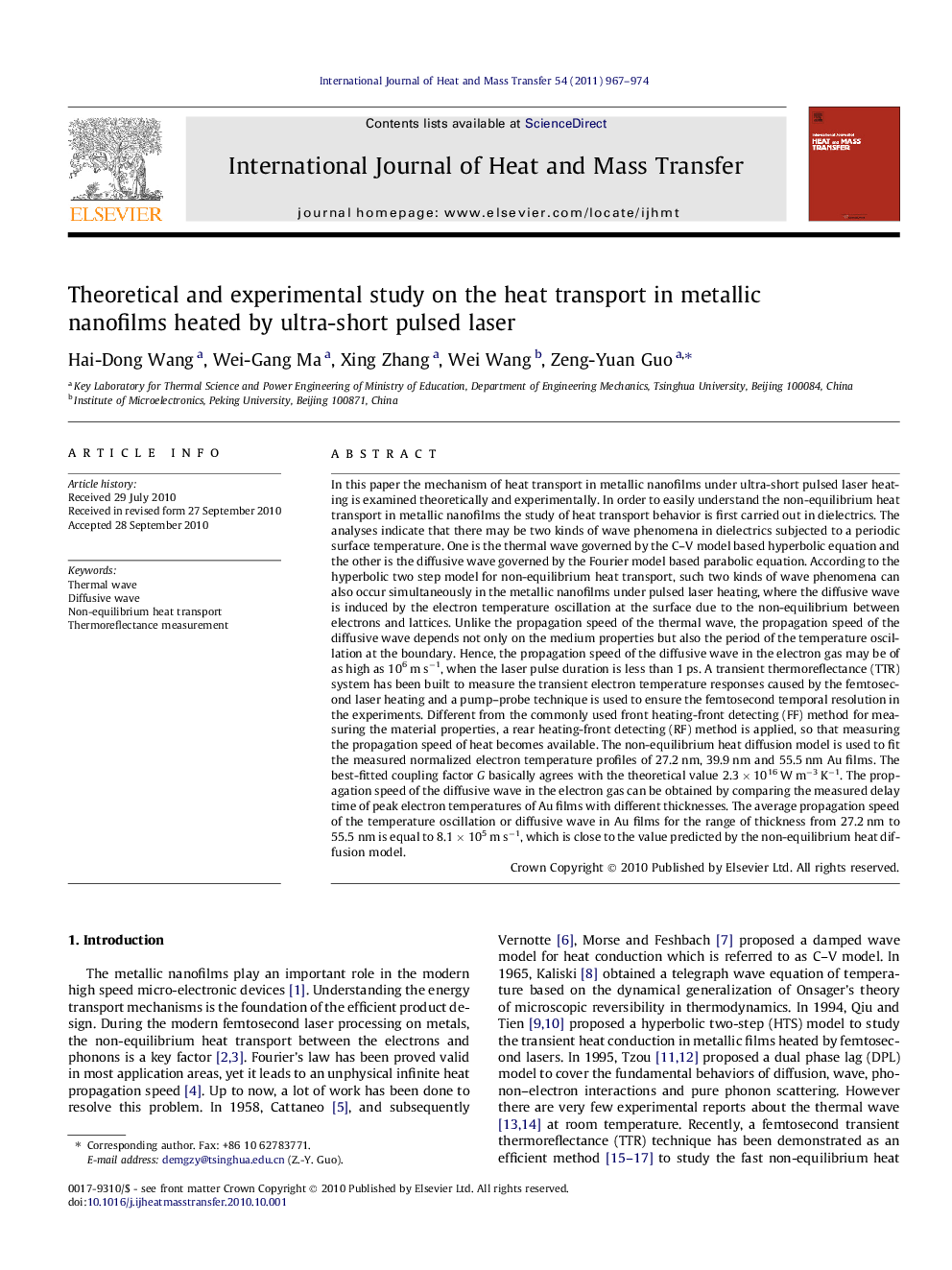| کد مقاله | کد نشریه | سال انتشار | مقاله انگلیسی | نسخه تمام متن |
|---|---|---|---|---|
| 660338 | 1458112 | 2011 | 8 صفحه PDF | دانلود رایگان |

In this paper the mechanism of heat transport in metallic nanofilms under ultra-short pulsed laser heating is examined theoretically and experimentally. In order to easily understand the non-equilibrium heat transport in metallic nanofilms the study of heat transport behavior is first carried out in dielectrics. The analyses indicate that there may be two kinds of wave phenomena in dielectrics subjected to a periodic surface temperature. One is the thermal wave governed by the C–V model based hyperbolic equation and the other is the diffusive wave governed by the Fourier model based parabolic equation. According to the hyperbolic two step model for non-equilibrium heat transport, such two kinds of wave phenomena can also occur simultaneously in the metallic nanofilms under pulsed laser heating, where the diffusive wave is induced by the electron temperature oscillation at the surface due to the non-equilibrium between electrons and lattices. Unlike the propagation speed of the thermal wave, the propagation speed of the diffusive wave depends not only on the medium properties but also the period of the temperature oscillation at the boundary. Hence, the propagation speed of the diffusive wave in the electron gas may be of as high as 106 m s−1, when the laser pulse duration is less than 1 ps. A transient thermoreflectance (TTR) system has been built to measure the transient electron temperature responses caused by the femtosecond laser heating and a pump–probe technique is used to ensure the femtosecond temporal resolution in the experiments. Different from the commonly used front heating-front detecting (FF) method for measuring the material properties, a rear heating-front detecting (RF) method is applied, so that measuring the propagation speed of heat becomes available. The non-equilibrium heat diffusion model is used to fit the measured normalized electron temperature profiles of 27.2 nm, 39.9 nm and 55.5 nm Au films. The best-fitted coupling factor G basically agrees with the theoretical value 2.3 × 1016 W m−3 K−1. The propagation speed of the diffusive wave in the electron gas can be obtained by comparing the measured delay time of peak electron temperatures of Au films with different thicknesses. The average propagation speed of the temperature oscillation or diffusive wave in Au films for the range of thickness from 27.2 nm to 55.5 nm is equal to 8.1 × 105 m s−1, which is close to the value predicted by the non-equilibrium heat diffusion model.
Journal: International Journal of Heat and Mass Transfer - Volume 54, Issue 4, 31 January 2011, Pages 967–974